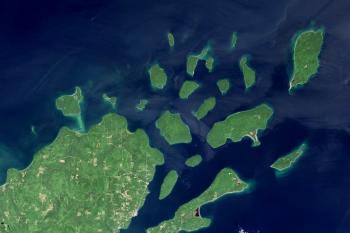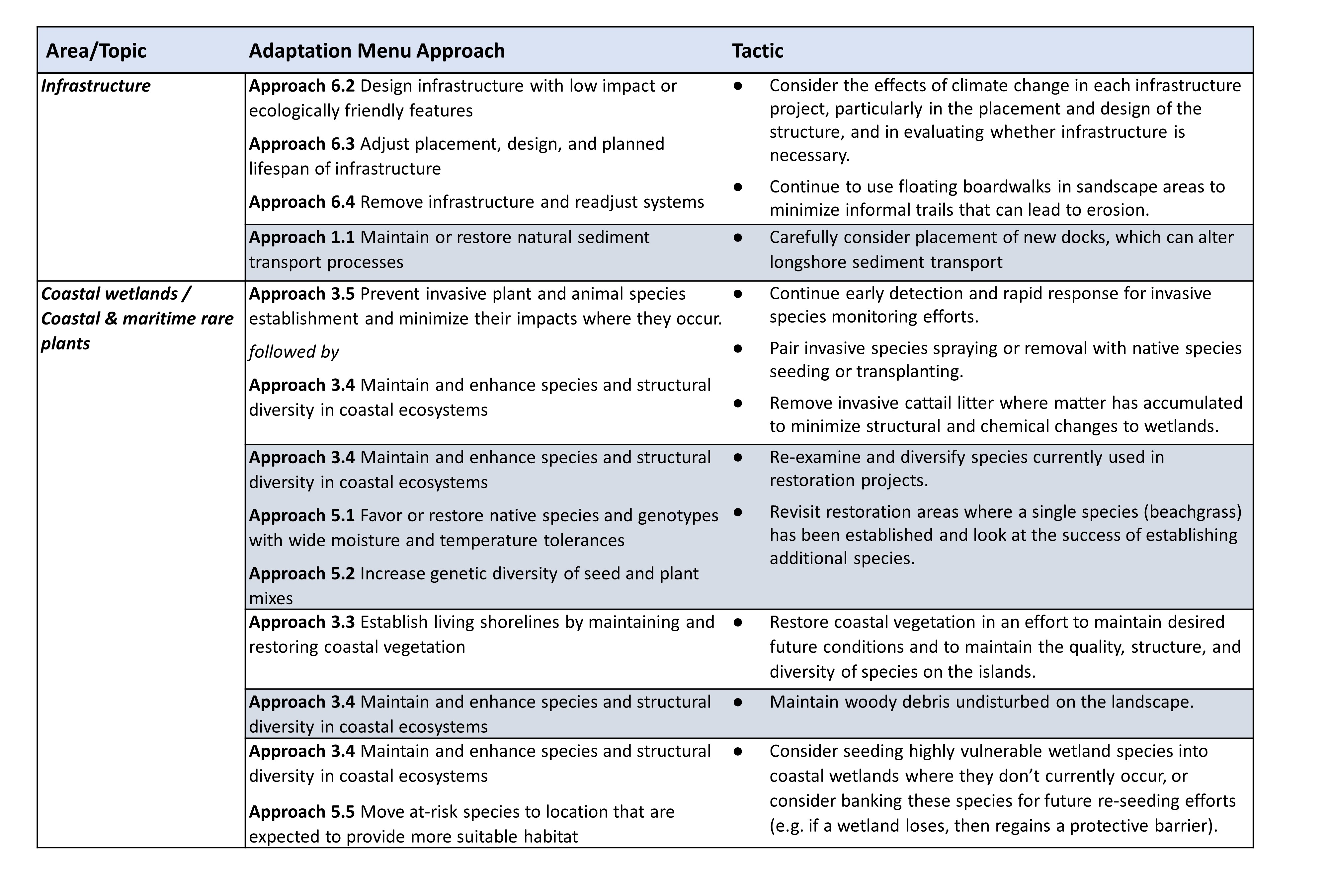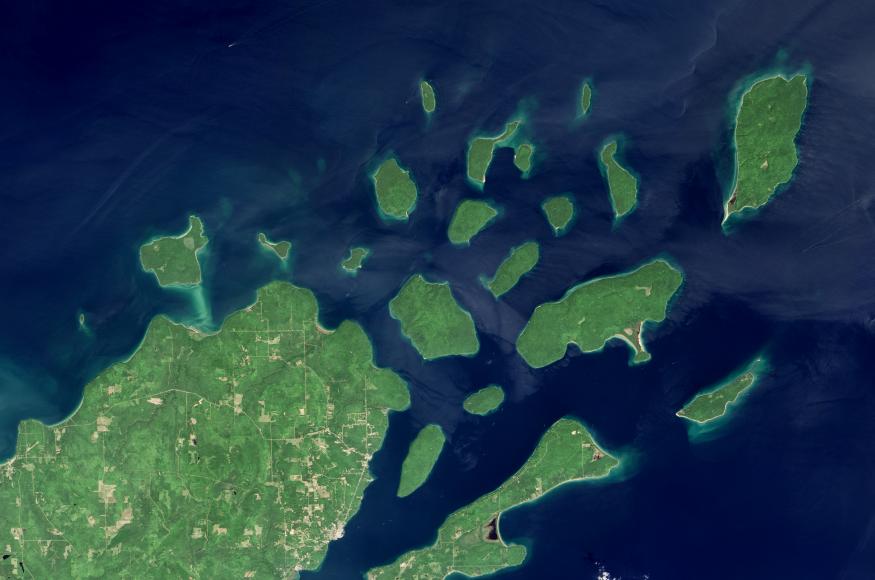Project Area
 The Apostle Islands National Lakeshore is located in the sub-boreal region of Lake Superior where a significant number of plant species are at the southern edge of their range, while others are at the northern edge of their range. Coastal wetlands within the Apostle Islands currently maintain a diverse assemblage of unique species and have high floristic quality as compared to wetlands monitored across the Great Lakes Basin by the Coastal Wetland Monitoring Program. High floristic quality among Apostle Islands wetlands can be attributed to the relatively low abundance of invasive species cover, and fen and bog habitats that can support uniquely adapted species tolerant of relatively low pH and nutrient limitations.
The Apostle Islands National Lakeshore is located in the sub-boreal region of Lake Superior where a significant number of plant species are at the southern edge of their range, while others are at the northern edge of their range. Coastal wetlands within the Apostle Islands currently maintain a diverse assemblage of unique species and have high floristic quality as compared to wetlands monitored across the Great Lakes Basin by the Coastal Wetland Monitoring Program. High floristic quality among Apostle Islands wetlands can be attributed to the relatively low abundance of invasive species cover, and fen and bog habitats that can support uniquely adapted species tolerant of relatively low pH and nutrient limitations.The adjacency and connectivity to Lake Superior has direct effects and influences on Apostle Islands coastal wetland hydrology and nutrient dynamics. Apostle Islands coastal wetlands exhibit three types of connections to Lake Superior: 1) wetlands with semi-permanent sand barriers that exchange water through the barrier; 2) transient barriers that form and break multiple times throughout the year, occurring in response to rising wetland water levels that breach the barrier or when lake waves sufficiently erode the barrier; and 3) open connected wetlands that maintain a surface water connection throughout the year.
For the purposes of this adaptation planning discussion, only coastal wetlands (with or without a Sphagnum peat mat) were considered.
Management Goals
The Apostle Islands National Lakeshore is largely managed passively, therefore long-term management goals and objectives are more accurately stated as desired future conditions for ecosystems.
Desired future conditions:
- The distribution and number of shore fens and similar wetland types remain stable or increase over time relative to current conditions.
- Wetland structure, hydrology, geomorphology, and vegetation continue to function within a natural range of variation.
- Rare, threatened, or endemic species occurrence and distribution at the habitat- and species-level remains stable over time. Communities maintain high floristic quality.
Given the protected status and diversity of coastal wetlands types in the Apostle Islands, these wetlands are well-positioned to serve as reference systems to study changes in wetland structure and function throughout the Great Lakes region.
Climate Change Impacts
For this project, the most important anticipated climate change impacts include:
- Reduced suitable habitat for coastal peatland and fen species including rare and keystone species. Of the species observed in coastal and poor fen communities, 25% are projected to lose suitable habitat in Wisconsin by 2070 and up to one-half of the species are considered highly vulnerable to widespread changes in their ranges, including many species currently prominent among lakeshore wetlands.
- Wetland barriers may be compromised by wave splash-over during periods of high lake level, more frequent strong storms, and less protective ice cover, which could damage sedge mats and lead to changes in water temperature, chemistry, and water level in coastal wetlands that may negatively affect the quality of coastal poor fens.
- Invasion by non-native species, especially in a warming climate and in periods of low Lake Superior water levels.
*A variety of reports were used when assessing climate change vulnerability and risks. References to these resources can be found in this document.
Challenges and Opportunities
Challenges
Opportunities
Adaptation Actions
Project participants used the Adaptation Workbook and the draft menu of Great Lakes Coastal Adaptation Strategies and Approaches to develop several adaptation actions for this project, including:


